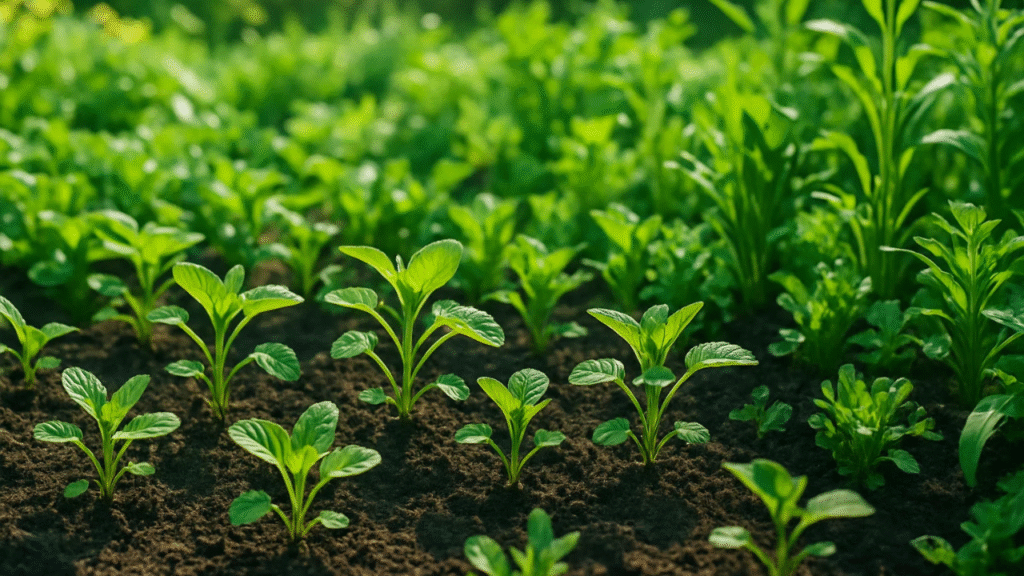
Common Seedling Diseases and Prevention: Essential Tips for Healthy Plants
Starting your garden from seeds is an exciting and rewarding process, but it comes with its own set of challenges. One of the most common hurdles gardeners face is dealing with seedling diseases. Understanding the common seedling diseases and prevention methods is key to ensuring your plants grow strong and healthy. From fungal infections to pest infestations, knowing how to identify and prevent these issues early can save your seedlings and help your garden thrive. In this guide, we’ll explore the most frequent diseases affecting seedlings and provide practical tips to keep them healthy and disease-free. 🌻
Table of Contents
Toggle🌱 What Are Common Seedling Diseases? 🌿
Seedling diseases are a common challenge for gardeners, especially when starting plants from seed. These diseases can stunt growth, cause wilting, or even kill young plants if not addressed early. Understanding the most common seedling diseases can help you identify and manage them effectively. 🌻
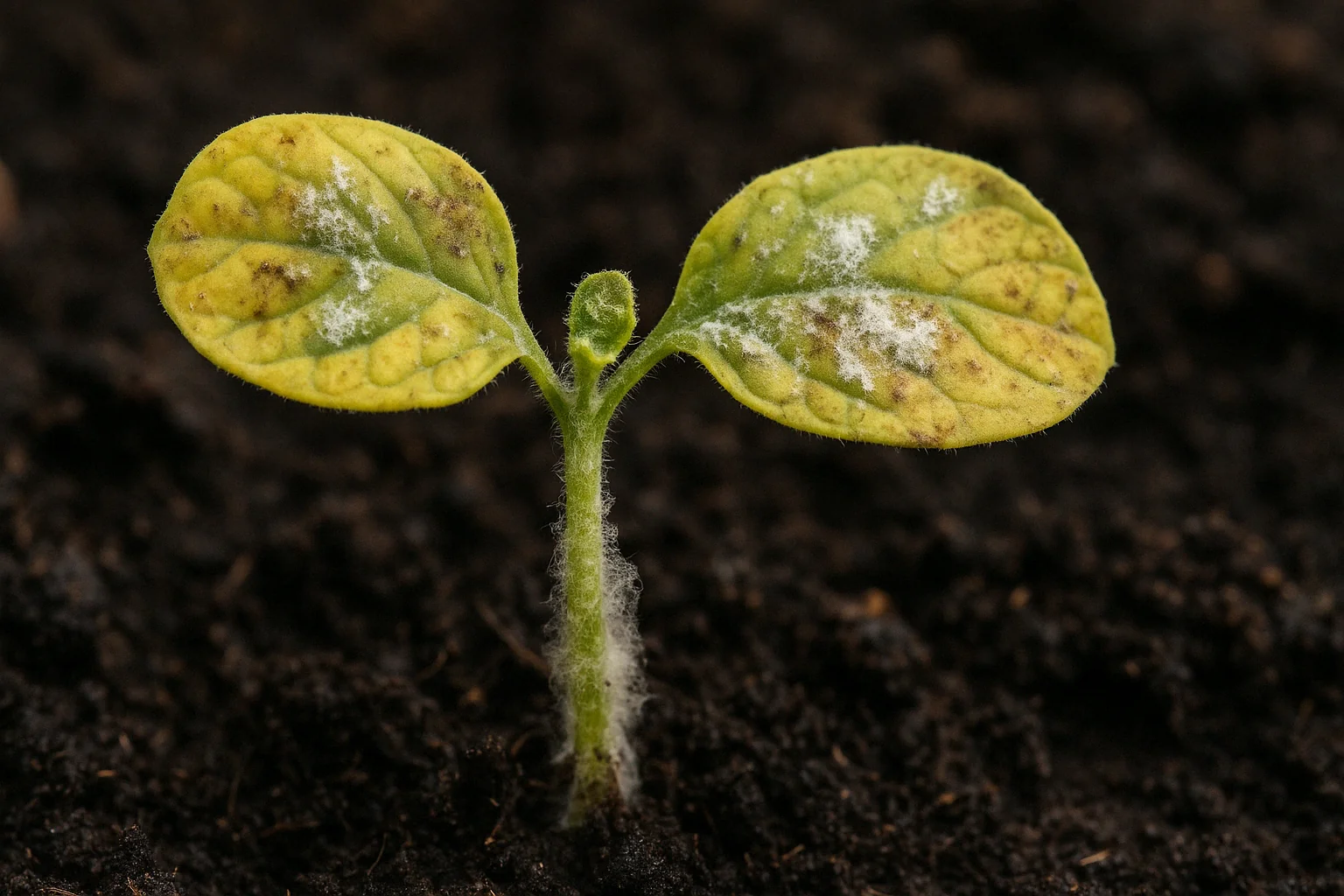
1. 🍄 Damping-Off Disease
Damping-off is a fungal infection caused by pathogens like Pythium, Rhizoctonia, and Fusarium. It typically occurs in seedlings that are grown in overly wet, poorly drained soil. Symptoms include yellowing leaves, stunted growth, and a thin, rotting stem near the soil level. To prevent damping-off, ensure proper air circulation, avoid overwatering, and use sterile soil. 💧
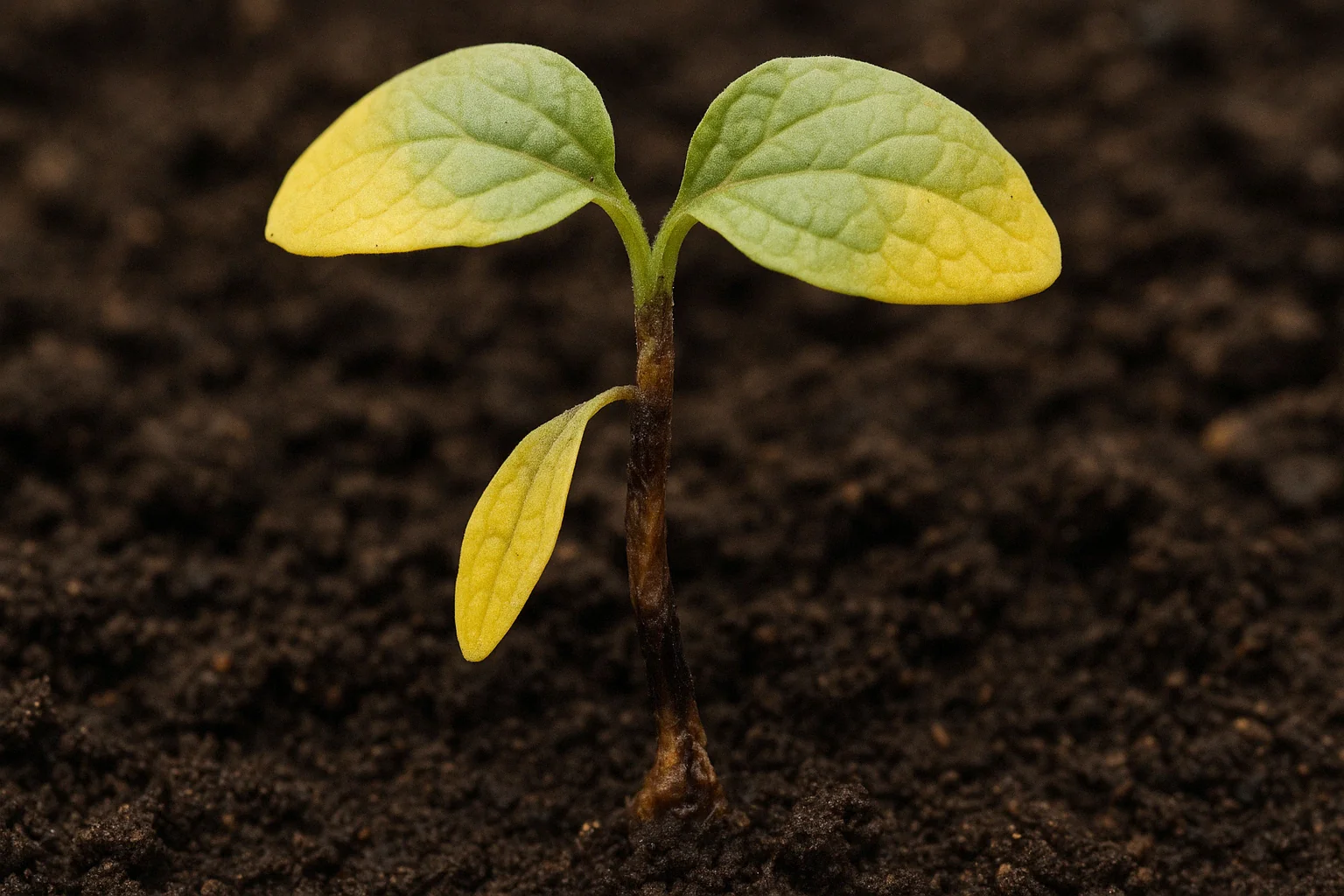
2. 🌾 Fusarium Wilt
Fusarium wilt is caused by a soil-borne fungus that attacks seedlings through the roots. It often results in yellowing or browning of the leaves, drooping, and eventual plant death. Avoid planting seedlings in infected soil and practice crop rotation to reduce the spread of this disease. 🌱
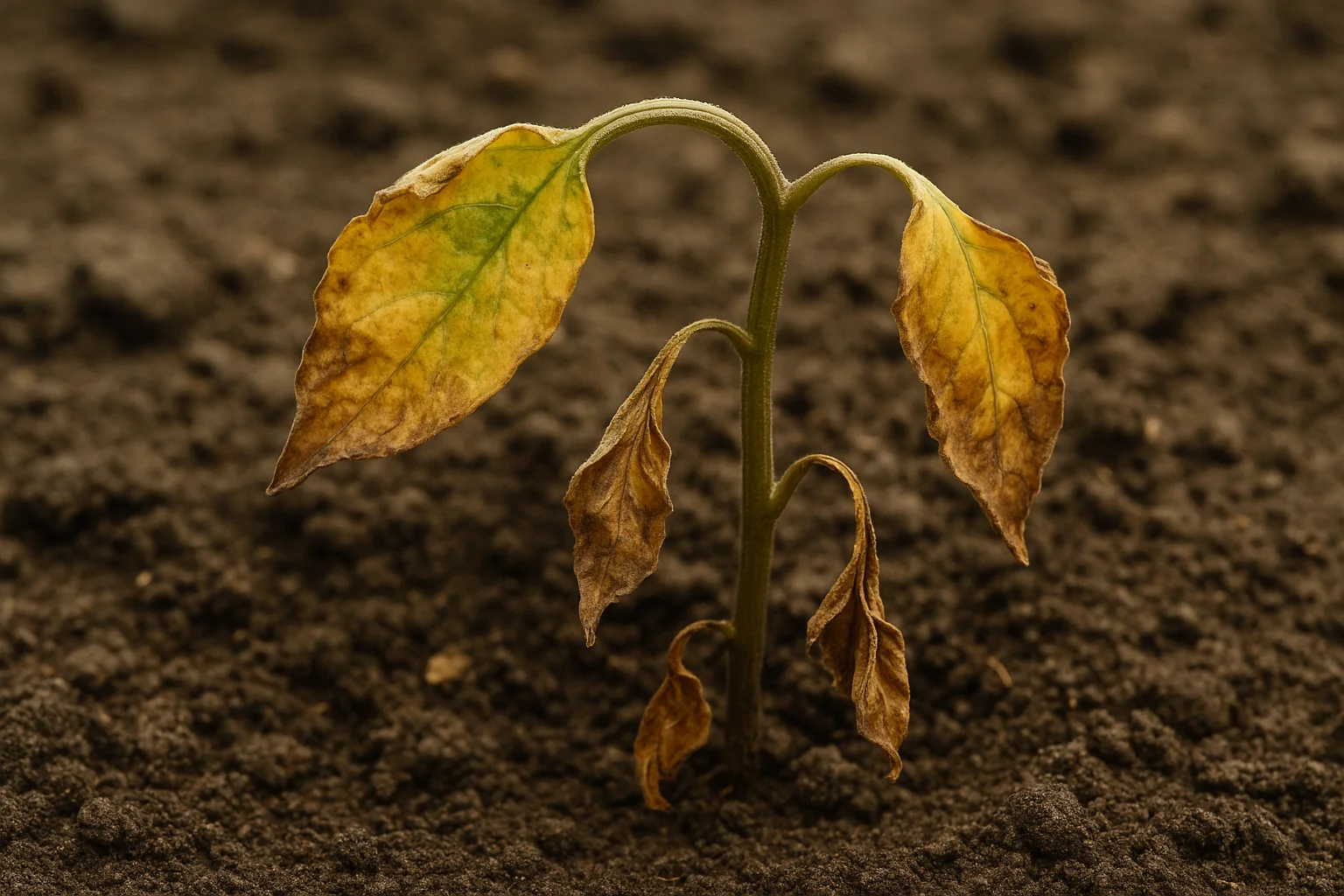
3. 🍂 Powdery Mildew
Powdery mildew is a fungal disease that affects seedlings grown in humid environments. It appears as a white, powdery coating on leaves, stems, and flowers. This disease can stunt growth and cause leaves to shrivel. To prevent powdery mildew, ensure good airflow and avoid overhead watering. 🌬️
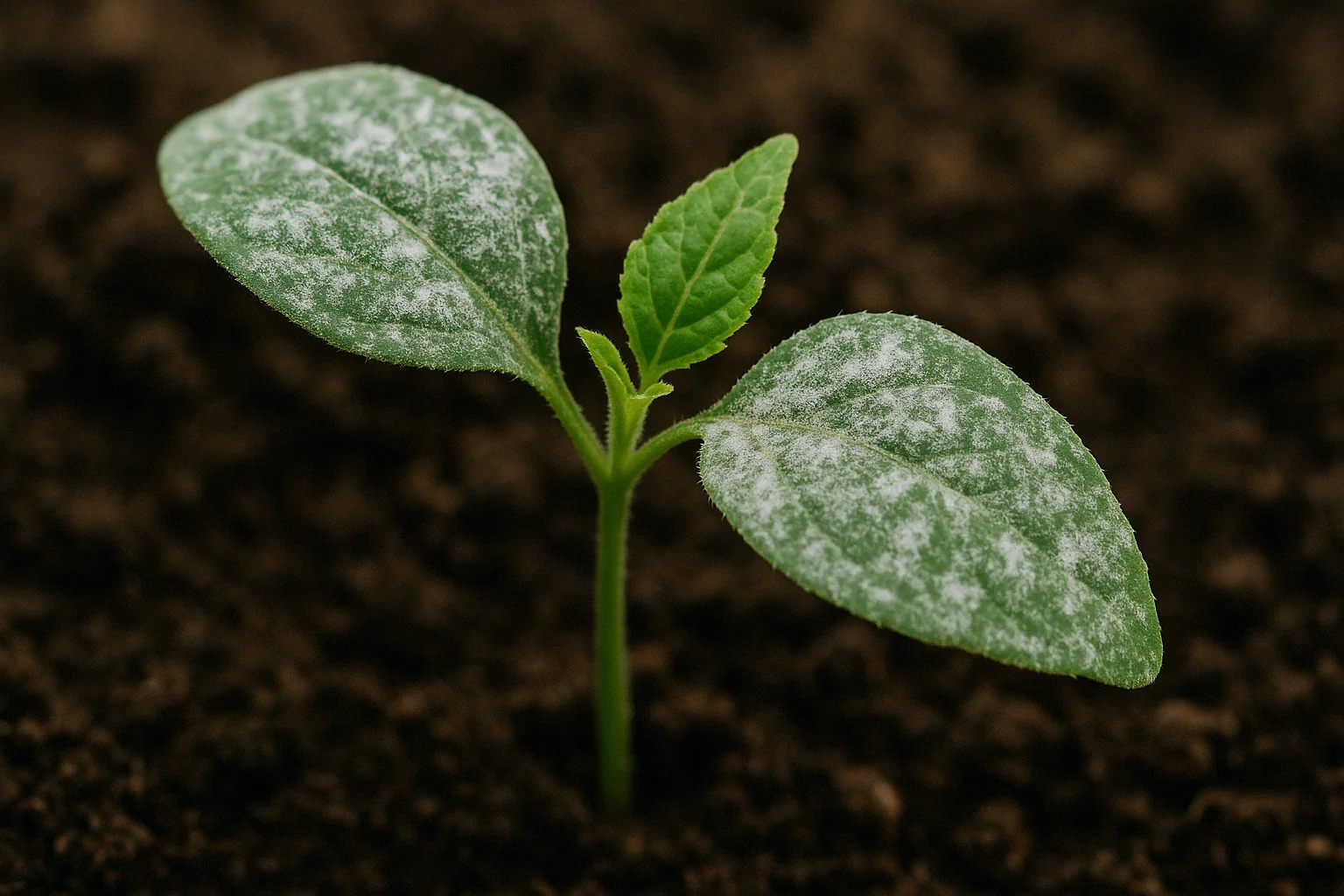
4. 🌸 Leaf Spot
Leaf spot diseases are caused by fungi and bacteria and often appear as round, discolored spots on leaves. These spots can be yellow, brown, or black. To reduce the risk, water seedlings at the base and remove infected leaves promptly to limit the spread. 🍃
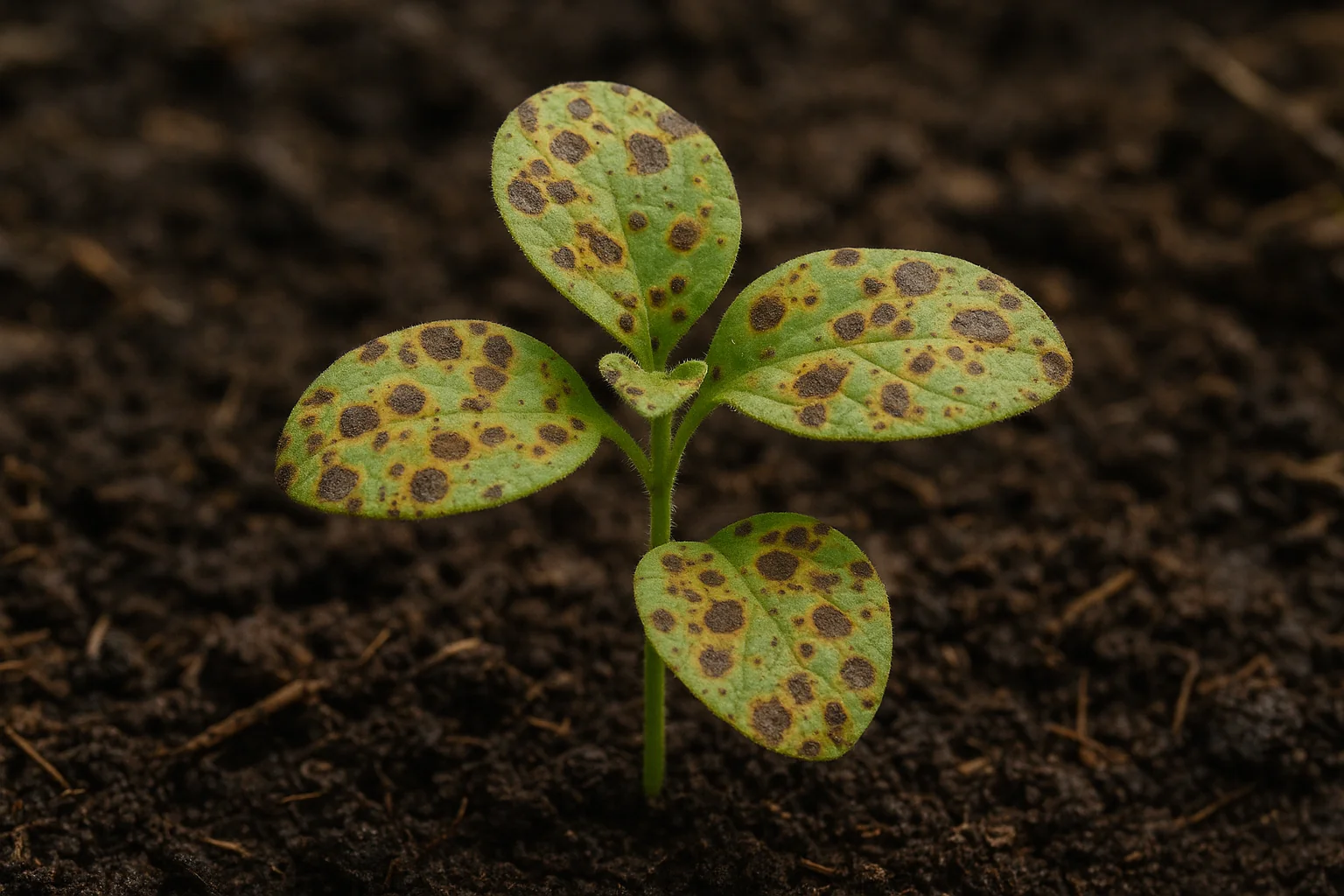
5. 🦠 Root Rot
Root rot is caused by various pathogens that thrive in waterlogged soils. It prevents seedlings from taking up water and nutrients, leading to wilting and yellowing of the leaves. Improving soil drainage and avoiding overwatering can significantly reduce the chances of root rot. 💧
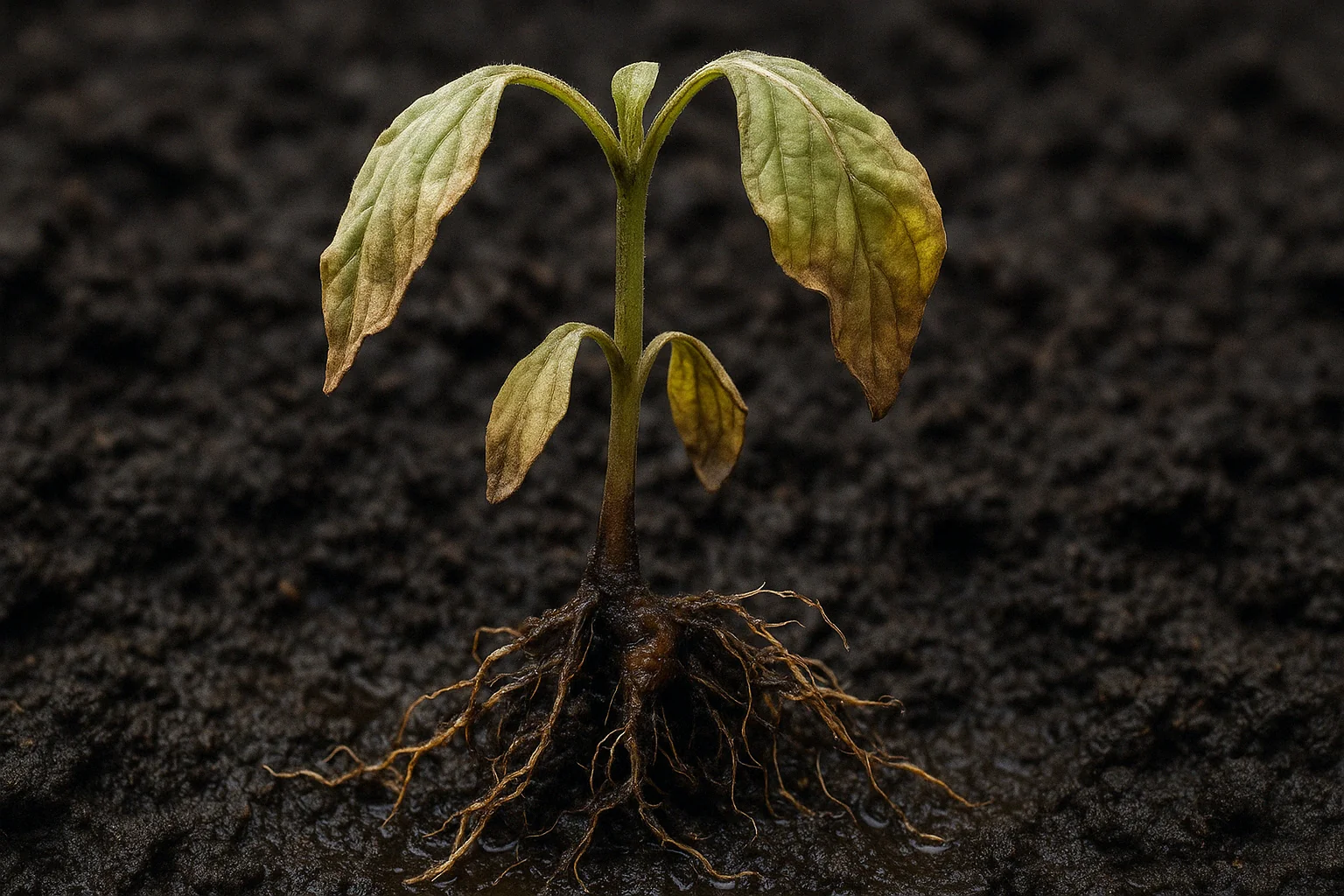
6. 🌻 Bacterial Wilt
Bacterial wilt affects seedlings by causing sudden wilting, usually with a slight yellowing of the leaves. This disease is often transmitted by insects, particularly cucumber beetles. Keeping plants healthy through proper care and removing infected plants promptly can help manage this issue. 🌼
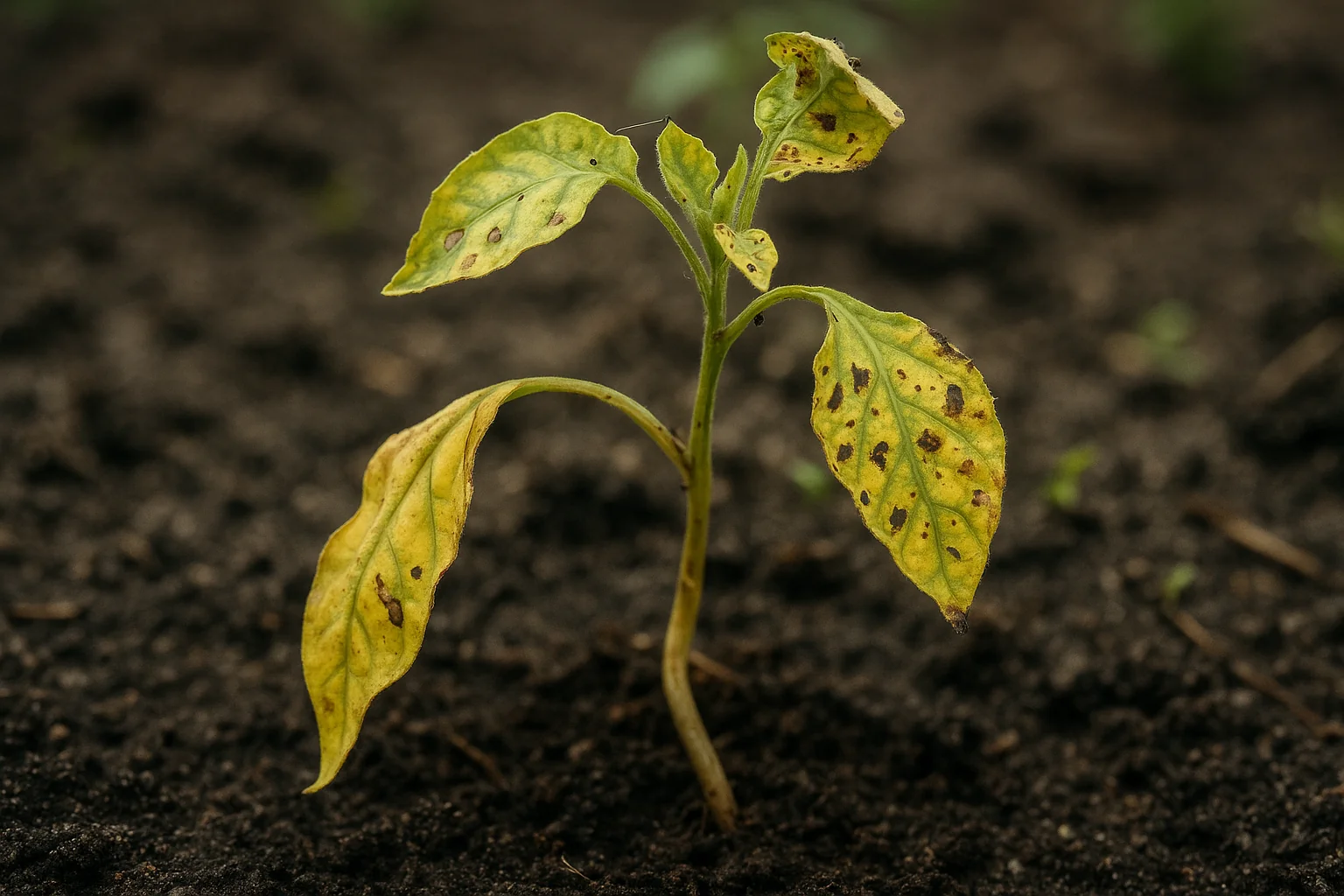
By being aware of these common seedling diseases and taking preventive steps, you can give your young plants the best chance for a strong start. 🌿
🌼 Identifying Seedling Diseases 🧐
Identifying seedling diseases early is crucial for preventing damage and ensuring healthy plant growth. Seedlings are especially vulnerable to infections due to their delicate nature. Here are some common signs to look for and tips to help you spot and address seedling diseases effectively. 🌸
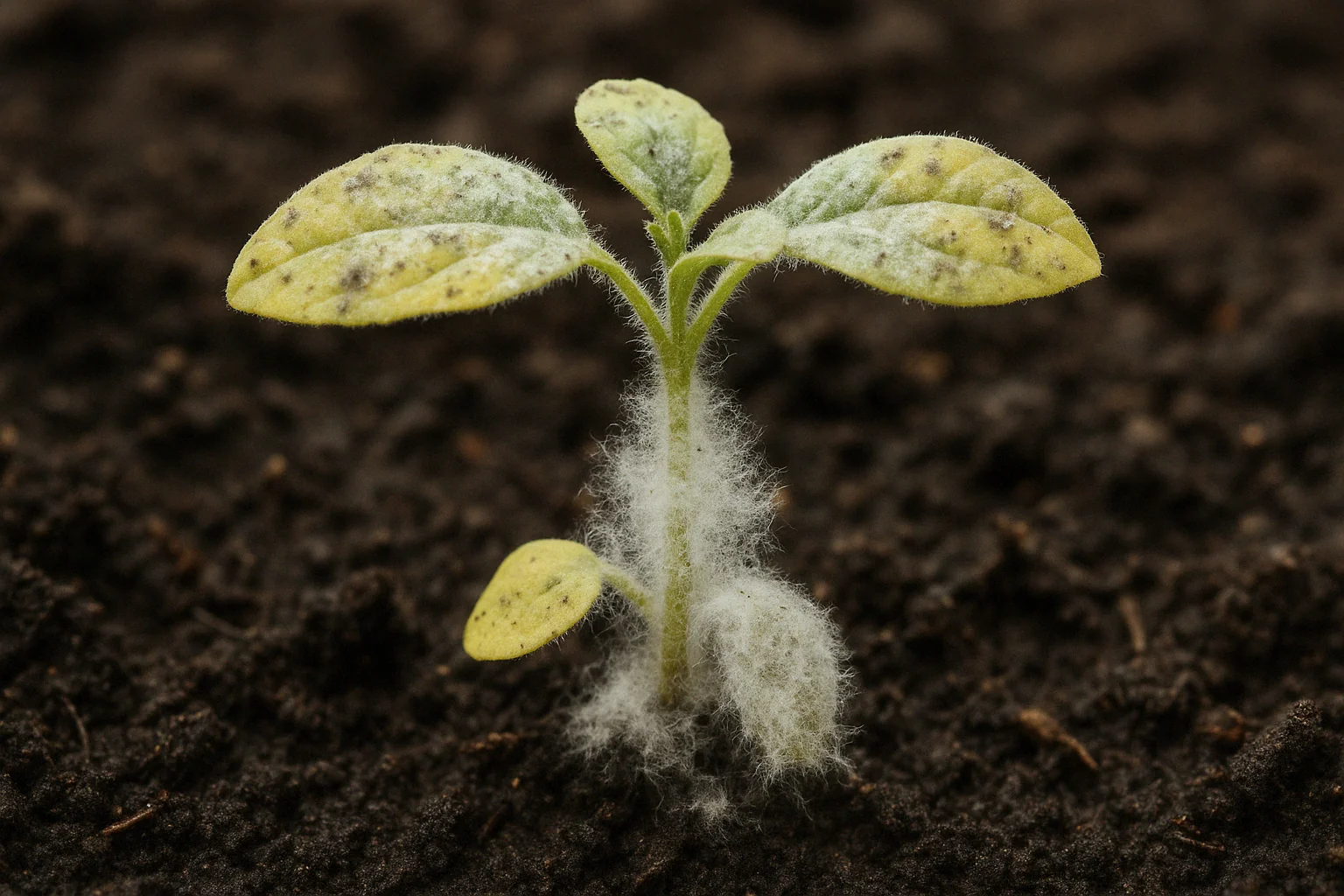
1. 🍃 Yellowing Leaves
Yellowing, or chlorosis, is a typical sign of nutrient deficiencies or root rot. If seedlings’ leaves turn yellow and wilt, it could indicate a fungal infection or poor soil drainage. Ensure proper watering and check for root health. If the soil stays too wet, roots may suffocate, leading to disease. 💧
2. 🌿 Wilting Plants
Wilting can result from both overwatering and under-watering. However, if seedlings remain wilted despite proper watering, it may point to a root rot issue caused by soilborne fungi. Removing affected seedlings and improving soil drainage can help prevent the spread of infection. 🌱
3. 🍂 Spots on Leaves
Brown, black, or yellow spots on seedling leaves may signal fungal or bacterial infections, such as early blight or downy mildew. To manage this, remove infected leaves promptly, and use a fungicide if necessary. Ensure adequate air circulation to reduce humidity, which promotes fungal growth. 🍃
4. 🌫️ Mold or Fuzzy Growth
If you spot fuzzy mold-like growth, it’s a sign of fungal infections like powdery mildew or damping-off disease. These diseases thrive in moist, stagnant conditions. Keep your seedlings in well-ventilated areas and ensure that the soil isn’t overly damp to reduce the risk of mold. 🌬️
5. 🌻 Stunted Growth
Seedlings with poor growth, often accompanied by a pale color, may be suffering from a viral infection or nutrient deficiencies. Poor soil or pest damage can also hinder growth. Regularly inspect your seedlings for pests and ensure they are receiving adequate light and nutrients. 🌞
6. 🌱 Blackened Stems
Blackening or darkening of stems is a common symptom of damping-off, a fungal disease that affects seedlings at the soil level. It often leads to sudden wilting or collapse of the plant. Avoid overwatering and practice proper sanitation by cleaning tools and containers to prevent the spread of this disease. 🧴
🌸 Prevention Tips 🛡️
- Use sterilized soil and containers to avoid introducing pathogens. 🧼
- Water seedlings carefully to avoid overwatering. 💦
- Maintain proper humidity and air circulation. 🌬️
- Remove and dispose of any infected seedlings or plant debris. 🍂

By staying vigilant and addressing potential diseases early, you can help your seedlings thrive and grow into healthy plants. 🌿
🌱 Prevention Tips for Healthy Seedlings 🌿
Growing healthy seedlings requires proactive care. Here are key prevention tips to help ensure your seedlings thrive: 🌸
💧 Proper Watering
Overwatering or underwatering can stress seedlings. Keep the soil consistently moist but not soggy. Use a gentle watering method like a spray bottle or drip irrigation to avoid disturbing the young roots. 💦

🌞 Adequate Light
Ensure your seedlings get enough light—about 12-16 hours a day. Use grow lights if you’re starting seeds indoors, placing them close enough to prevent leggy growth. Too little light weakens seedlings, making them vulnerable to disease. 🌞
🌬️ Good Air Circulation
Provide proper ventilation around your seedlings. This prevents mold and fungal growth, which can damage young plants. A small fan on a low setting can improve airflow, reducing the risk of diseases. 🌬️
🌡️ Temperature Control
Seedlings are sensitive to extreme temperatures. Keep the room temperature between 65-75°F (18-24°C) for optimal growth. Avoid drafts and sudden temperature fluctuations that can stress your plants. 🌡️
🧴 Use Clean Tools and Containers
Always use sterilized pots, trays, and tools to prevent the spread of pathogens. This is essential for preventing soil-borne diseases that can stunt your seedlings’ growth. 🧼
🌱 Thinning Seedlings
Thinning is essential for preventing overcrowding, which can lead to weak, spindly growth. Once seedlings have their first true leaves, thin them to give each plant enough space to grow healthy. ✂️
🌳 Harden Off Seedlings Gradually
When transplanting seedlings outdoors, avoid shock by hardening them off. Gradually expose seedlings to outdoor conditions by placing them outside for a few hours each day, increasing the exposure time over a week. 🌤️
By following these prevention tips, you’ll give your seedlings the best start, ensuring they grow strong and healthy. 🌿
🛠️ How to Treat Seedling Diseases 🌿
Dealing with seedling diseases early can save your plants and help them thrive. Here’s how to effectively manage common issues: 🌸

🔍 Identify the Disease Early
Common seedling diseases include damping-off, powdery mildew, and fungal infections. Signs like wilting, yellowing leaves, and mold growth are indicators that your seedlings may be infected. 🧐
🌬️ Ensure Proper Airflow
Poor ventilation can lead to fungal growth. Keep your seedlings in a well-ventilated area, and avoid overcrowding them. This promotes healthy growth and reduces disease risk. 🌬️
🌿 Use Fungicides Wisely
If you notice a fungal infection, applying a fungicide can be helpful. Opt for organic options like neem oil, which is safe for both your seedlings and the environment. Follow the label instructions for application. 🍃
💧 Watering Techniques Matter
Overwatering can create a breeding ground for diseases. Water your seedlings at the base to avoid wetting the leaves, and ensure the soil drains well to prevent root rot. 💦
🗑️ Remove Infected Seedlings
If a seedling shows severe signs of disease, it’s best to remove it from the group to prevent the infection from spreading. Dispose of it properly, and avoid composting infected plants. 🚮
🧼 Maintain Cleanliness
Always clean your tools, pots, and trays before using them again. Disinfecting helps stop the spread of diseases to healthy plants. 🧴
🌱 Promote Strong Growth
Healthy seedlings are more resistant to diseases. Ensure they get the right amount of sunlight, nutrients, and water to develop strong roots and stems. 🌞
By taking these proactive steps, you can protect your seedlings from diseases and help them grow into healthy, productive plants. 🌿
🌿 How to Build Resilience in Seedlings 🌱
Building resilience in seedlings is key to ensuring they grow into strong, healthy plants. As an expert in plant care, here’s how you can help your seedlings thrive and withstand stressors like pests, temperature fluctuations, and poor soil conditions. 🌼

💧 Provide Consistent Watering
Consistent watering is crucial. Seedlings need enough moisture to develop strong roots, but overwatering can lead to root rot. Water gently, ensuring the soil is moist but not soggy. A well-draining soil mix helps prevent waterlogging. 💦
🌞 Use Proper Lighting
Seedlings need plenty of light for healthy growth. Place them in a spot with indirect sunlight or use grow lights if you’re starting them indoors. Proper lighting helps strengthen the stems and prevents seedlings from becoming leggy. 🌞
🌤️ Harden Them Off Gradually
Before transplanting seedlings into the garden, acclimate them to outdoor conditions. Gradually expose them to sunlight, wind, and temperature changes over a week or two. This process, known as hardening off, helps seedlings adapt to outdoor stressors. 🌬️
🌱 Fertilize with Care
While seedlings need nutrients, too much fertilizer can harm their delicate systems. Use a balanced, diluted fertilizer or compost to give them the essential nutrients they need without overwhelming them. A gentle feed every two weeks is usually sufficient. 🌿
🌸 Ensure Proper Spacing
Overcrowded seedlings compete for light, water, and nutrients, weakening their growth. Give each seedling enough space to develop, allowing for air circulation to prevent fungal diseases. Proper spacing promotes strong, resilient plants. ✂️
🦗 Control Pests Naturally
Pests can weaken seedlings, so it’s important to protect them early. Use natural methods like neem oil, insecticidal soap, or introducing beneficial insects like ladybugs to control pests without harming your plants. 🐞
🌡️ Maintain Stable Temperatures
Seedlings are sensitive to temperature extremes. Keep them in a location with stable, moderate temperatures to prevent stress. Avoid sudden temperature fluctuations, which can stunt growth and weaken their resilience. 🌡️
By following these simple, effective strategies, you’ll help your seedlings build resilience and grow into thriving plants, ready to face the challenges of their environment. 🌻
🌿 Final Thoughts 🌸
In conclusion, understanding common seedling diseases and prevention is essential for any gardener looking to ensure healthy and robust plant growth. By recognizing the symptoms of fungal, bacterial, and insect-borne diseases early, you can take proactive steps to protect your seedlings. 🌱
Maintaining proper watering techniques, ensuring good air circulation, and practicing cleanliness in your growing space are all key to keeping your seedlings disease-free. 💧 Additionally, using preventative treatments like organic fungicides and bactericides, as well as selecting disease-resistant plant varieties, can further safeguard your plants. 🌿
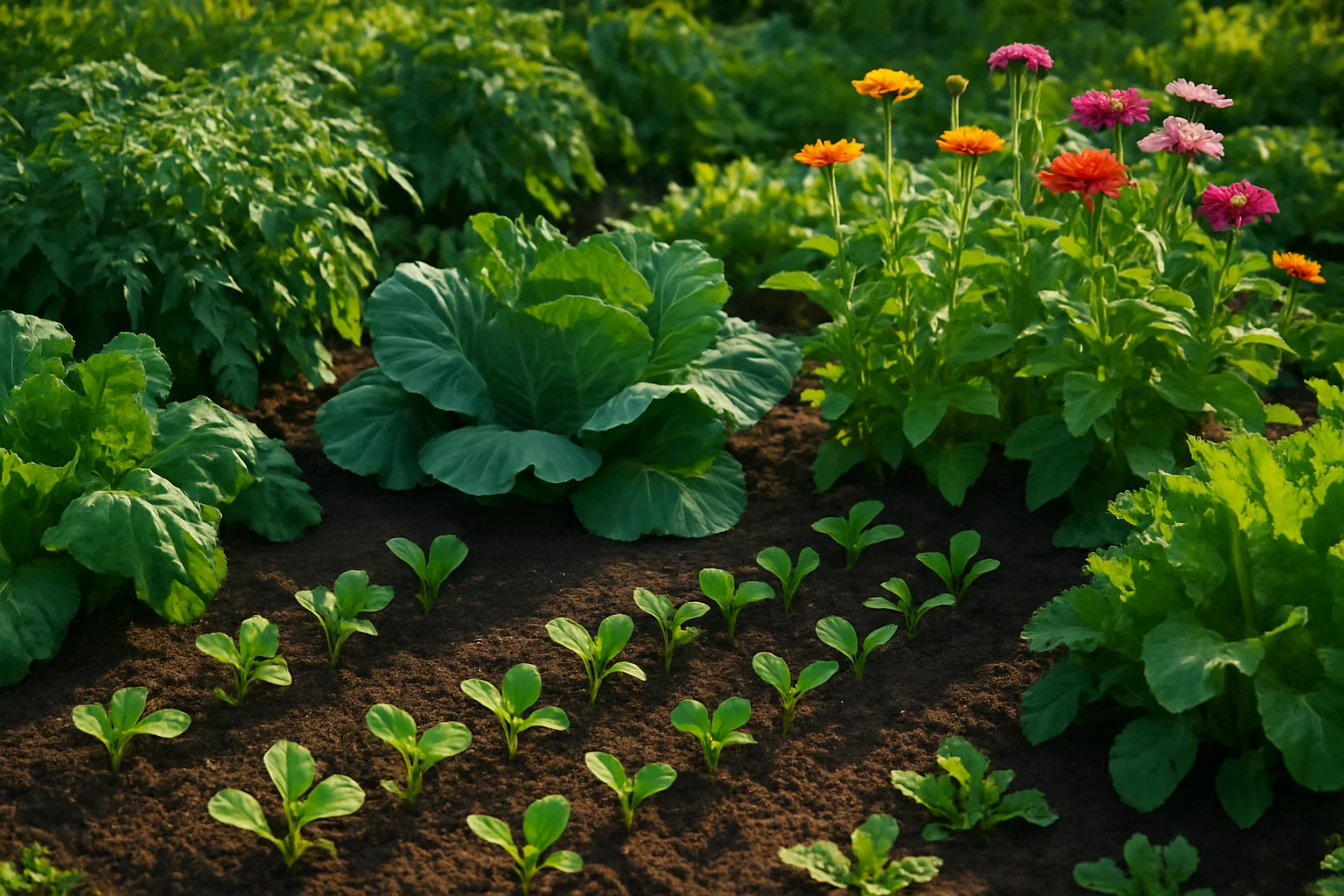
With the right knowledge and care, you can reduce the risk of seedling diseases, giving your plants the best chance for thriving, vibrant growth. 🌟 Keep an eye out for early warning signs, and take swift action to prevent disease from spreading. 🚨 Healthy seedlings are the foundation of a successful garden, and by applying the tips and strategies in this article, you’ll be well on your way to growing a beautiful, disease-free garden. 🌻
Happy gardening! 🌷
Frequently Asked Questions (FAQ)
What are the most common seedling diseases?
The most common seedling diseases include damping-off, caused by fungal pathogens like Pythium and Rhizoctonia, powdery mildew, downy mildew, fusarium wilt, and bacterial leaf spot. These diseases can weaken seedlings, hinder their growth, and even cause them to die.
How can I prevent damping-off in seedlings?
To prevent damping-off, maintain proper soil moisture levels, avoid overwatering, and ensure good air circulation. Using a sterile seedling tray and soil, as well as applying fungicides or natural treatments like cinnamon, can help prevent this fungal infection.
Can poor watering practices lead to seedling diseases?
Yes, poor watering practices, such as overwatering or watering seedlings at night, can create a moist, stagnant environment that encourages fungal and bacterial growth. Always water seedlings in the morning, allowing the soil to dry out before evening.
How do I prevent fungal diseases on my seedlings?
Prevent fungal diseases by using well-draining soil, spacing seedlings properly to allow air circulation, and avoiding overhead watering. Regularly inspect seedlings for signs of fungal infection and remove infected plants immediately to prevent spread.
Are there any organic ways to protect seedlings from diseases?
Yes, organic methods like neem oil, garlic spray, and baking soda solutions can help prevent fungal and bacterial diseases. Additionally, planting disease-resistant seed varieties and using compost tea can boost seedling health and resilience.
How can I treat bacterial infections in seedlings?
For bacterial infections, remove infected seedlings and clean your gardening tools. Use an organic bactericide or copper-based solution to treat affected plants. Avoid working in the garden when seedlings are wet to prevent further spread.
What should I do if I notice a disease on my seedlings?
If you notice disease symptoms, promptly remove and dispose of infected seedlings to avoid contamination of healthy ones. Sterilize all tools and trays to prevent cross-contamination, and take preventive measures such as adjusting watering and spacing practices.
Can I prevent pest-related diseases in seedlings?
Yes, preventing pest-related diseases involves keeping seedlings free of pests that can carry disease. Use natural pest control methods like insecticidal soap, neem oil, or beneficial insects such as ladybugs to control pest populations.
